SEC-S19/W3 | Mastering the P2P Market
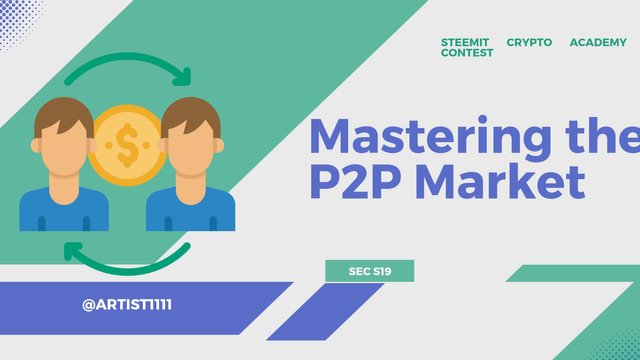
Hello everyone! I hope you are all doing well and enjoying life with the blessings of Allah Almighty. I am happy to take part in the exciting challenge hosted by SteemitCryptoAcademy community . So, without any further delay, let's dive right in! Shall we ? ........, Okay , Okay😊! .
Explain how the P2P (Peer-to-Peer) market for USDT works on platforms like Binance and Huobi. What are the main characteristics that differentiate P2P transactions from traditional transactions on a centralized exchange platform? |
|---|
Understanding P2P Market for USDT : The P2P market is one where USDT is exchanged between peers on platforms such as Binance and Huobi. It does not include an intermediary, and therefore, transactions are much more direct and often at a faster speed.
You have a trade contract with an individual who must either buy or sell USDT on such platforms. The variant terms that will be settled by both parties may include the payment plan and price accepted. However, in whichever manner, the two parties always know what is expected of them.
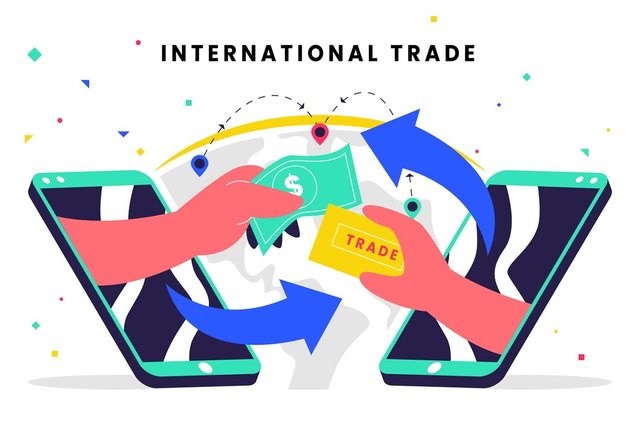
One outstanding characteristic of these transactions is protection with escrow. That essentially means that the platform holds the USDT until both parties have delivered their end of the bargain. This will help prevent fraud and let the users trust each other.
Most of the transactions involving USDT are based on the TRC 20 standard. Such a standard enables fast and cheap transfers. However, being aware of how this technical standard works might be important to avoid issues or for smooth transactions.
These platforms allow you to do payment in many modes, including bank transfer or payments through applications; ensure that you have selected a method that will be convenient for you and the other party. Exchanges make it flexible to do transactions.
You will be in a position to trade USDT safely and quickly by using P2P and knowing their attributes. It enables you to be clear with details, having to allow the terms to be okay before executing a transaction.
In the world of cryptocurrency, peer-to-peer transactions and transactions on centralized exchange platforms offer different experiences. Knowing the key characteristics will let you pick the best method for your needs.
Decentralized vs. Centralized: P2P transactions occur directly between users with no central authority overseeing the process. In contrast, centralized exchanges are managed by one single organization that controls the trading environment and holds users' funds within that very exchange.
Control and Custody: In the case of P2P platforms, users are in control of their money until a transaction has been completed. Users deposit their funds into the exchange's custody for trade execution and settlement on centralized exchanges.
Transaction Speed and Fees: In comparison, P2P transactions may be slower and further require some negotiation steps. Most centralized exchanges offer faster transaction times and more streamlined procedures while charging more in trading and withdrawal fees.
Privacy and Security: There is more privacy with P2P transactions, as trades occur directly between peers. Centralized exchanges could require personal information and enforce different levels of security; if the platform is compromised, there could be a problem.
Dispute Resolution: P2P platforms generally integrate escrow services for transaction security and the process of dispute resolution. Centralized exchanges usually have their own support teams to handle issues but do not use any kind of escrowing for individual trades.
Payment Methods: P2P platforms provide several payment methods, such as bank transfers or payment applications, to give users more flexibility. Most centralized exchanges have fewer options for payments and are mainly oriented toward deposits and withdrawals of cryptocurrencies.
The difference in knowing what these are will enable one to better navigate one's options in picking the best transaction method that suits your needs.
What is TRC 20 USDT and what are the main differences between TRC 20 USDT and other USDT token standards like ERC 20? |
|---|
TRC 20 USDT literally means the Tether, USDT stablecoin version running on the TRON Blockchain. This token standard is designed to be able to take advantage of the features of the TRON network, such as its high transaction speed and low fees.
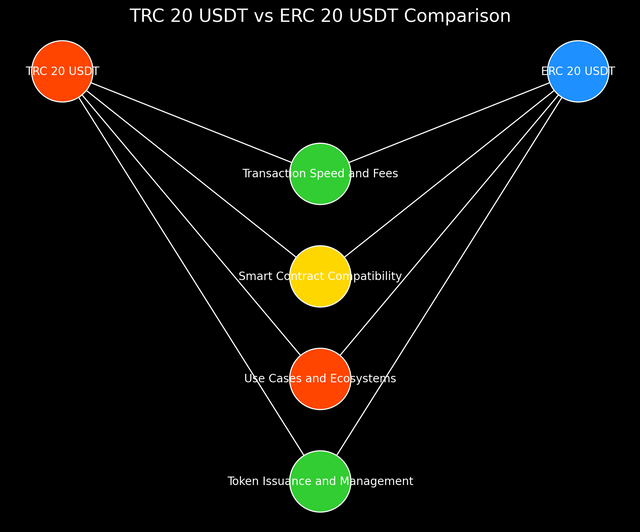
Graphical understanding
Transaction Speed and Fees: By default, transactions in TRC 20 USDT are faster and cheaper compared with their ERC 20 USDT counterpart, which is based on the Ethereum blockchain. The TRON network is designed for faster confirmation times and lower transaction costs.
The differences between them lie in the networks: TRC 20 USDT operates on the TRON network, which is scalable and efficient in execution. ERC 20 USDT is based on Ethereum, which, although secure and widely used, often gets jammed by loads, thus resulting in higher transaction fees.
.webp)
Difference in b/w
Smart Contract Compatibility: Although both implement the standards TRC 20 and ERC 20, respectively, which are smart contracts in their own right, these have been optimized for their respective blockchains. While ERC 20 is older and more tightly integrated into Ethereum's much larger ecosystem, TRC 20 has the advantage of lower costs and faster transactions on TRON.
Use Cases and Ecosystems: TRC 20 USDT is mainly utilized within the TRON ecosystem, including many DApps and DeFi platforms. Essentially, ERC 20 USDT is involved in most of the Ethereum ecosystem, including a lot of exchanges and DeFi applications, since Ethereum has wide adoption.
Token Issuance and Management: The governance structure and the various protocols within TRC 20 and ERC 20 USDT are unique to their respective base blockchains. TRC 20 USDT exploits the features of TRON, whereas ERC 20 USDT uses the standards and infrastructure provided by Ethereum.
These differences can help you pick the proper version of USDT for your transaction. Make sure it suits your needs in terms of speed, cost, and compatibility with different blockchain ecosystems.
What is the role of Escrow protection in P2P transactions and how does it help secure transactions for buyers and sellers? |
|---|
Escrow protection is very critical in peer-to-peer transactions since it gives the means to securely hold and protect funds during the trade process. Such a mechanism helps ensure that both buyers and sellers commit to the deal for the safety of the transaction by each party.
Holding Funds Securely: The P2P transaction will be accompanied by escrow services that hold funds in a secure account until the agreement conditions are met. In simple terms, a seller shall not be able to access the funds until a buyer confirms reception of goods or services agreed upon.
Establishing Trust Between Parties: Escrow protection helps in building trust between buyer and seller, where no party can back out without consequences. This assures both parties that their interests are taken care of and that the transaction will go through in a completely fair manner.
Fraud Prevention: The introduction of escrow drastically brings down the occurrence of fraud. It ensures protection to the seller from non-payment and protection to the buyer against a situation wherein he is asked to pay for a product that is never delivered. It simply means that this would help in avoiding situations where one can cheat the other.
Compliance with Terms: Many a time, escrow services are instructed to ask both parties to perform certain acts before releasing the funds. This makes sure that the terms of the agreement about delivering the goods or completing the services are fulfilled before money is actually transferred.
Dispute Resolution: In case of any issues with the transaction, the escrow service will step in to mediate and help resolve the issue. This offers further protection to make sure that any miscommunications are resolved in a fair and timely manner.
Streamlining of Transactions: Protection via escrow clearly outlines the steps and conditions for the completion of a trade. Such a structured approach makes the process easier, with less potential for complications to arise for either the buyer or the seller.
Within P2P transactions, escrow protection enables both the buyer and the seller to execute trades in a more confident way—bearing in mind that their money and agreements are well guarded during the transaction process.
What are the different payment methods available on P2P exchange platforms for USDT transactions? Compare at least three payment methods in terms of speed, security and fees. |
|---|
P2P exchange platforms offer several payment methods for USDT transactions. Each has its own advantages and drawbacks in terms of speed, security, and fees. In this section, three common payment methods—bank transfers, payment apps, and cryptocurrencies—will be compared head-to-head against one another.
1. Bank Transfers
- Speed: Interbank transactions could run from a few minutes , hours to several days, depending on banks and the type of transfer—domestic or international.
- Security: Bank transfers are largely secure because of the robust regulatory control and fraud prevention. However, they are prone to errors or delays.
- Fees: The cost of a bank transfer differs from one institution to another. They are very cheap or free locally, while international ones might be considerably expensive.
2. Payment Apps (e.g., PayPal, Venmo)
- Speed: Payment apps are far quicker than bank transfers because nearly all their transactions are basically instant.
- Security: While most payment apps have very tight security measures in place, like encryption and fraud detection, they can be very vulnerable to account breaches or scams.
- Fees: Fees depend on the app. Some of them charge small percentages for transactions, mostly when one uses credit cards or instant transfers.
3. Cryptocurrencies, e.g. Bitcoin, Ethereum
- Speed: A transaction with cryptocurrency might be quick; it can even be done within minutes. Again, speed can vary depending on how congested the network is and the cryptocurrency one is using.
- Security: Cryptocurrencies offer a high level of security by their very nature through the technology of blockchain; however, they require the user to become very cautious with their private keys to avoid theft.
- Fees: Transaction fees may be low but are highly dependent on the cryptocurrency and the network condition. For example, Bitcoin transactions can get very expensive if the network is too busy.
Summary of Comparison:
- Bank Transfers: Lower fees but slow processing times. Therefore, it's suitable for bigger amounts since the transaction cost will be lesser.
- Payment Apps: Fast processing time with reasonable fees, but it has more security risks and is only suitable for small transaction amounts.
- Cryptocurrencies: Fast transactions that are very secure; however, fees and processing times can vary due to the conditions of the network.
Relevant here is to consider your priorities on the three factors: speed, security, and the fees attached to each transaction. Every method has been engineered to suit specific needs in regard to a certain transaction.
Complete a P2P transaction to purchase USDT using a payment method of your choice on a P2P exchange. Document each step of the process with screenshots or detailed descriptions, and share your observations about the benefits and challenges encountered |
|---|
Here is a step-by-step guide on how one can perform a P2P transaction to buy USDT using a payment app, say, PayPal, on a P2P exchange.
Step-by-Step Guide to Buy USDT Via Payment App
1. Choosing the P2P Exchange:
A P2P exchange supporting the transactions of USDT and accepting your preferred payment method is to be chosen.
 |
|---|
2. Sign up:
- Sign up with the P2P exchange of your choice. Verify your identity if you must meet the obligations of the platform.
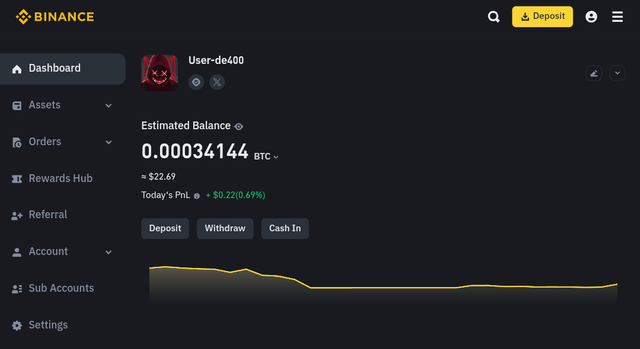 |
|---|
3. Searching for the Seller:
- Search through listings of USDT for sale. Filter by 'Buy with PayPal' or any other payment method accepted by the seller. Inquire about the rating of the seller and reviews left.
 |  |
|---|
4. Begin the Trade:
- Initiate the trade with the desired amount of USDT to purchase. Go through the terms and conditions that are set by the seller. Confirm that his payment method is PayPal.
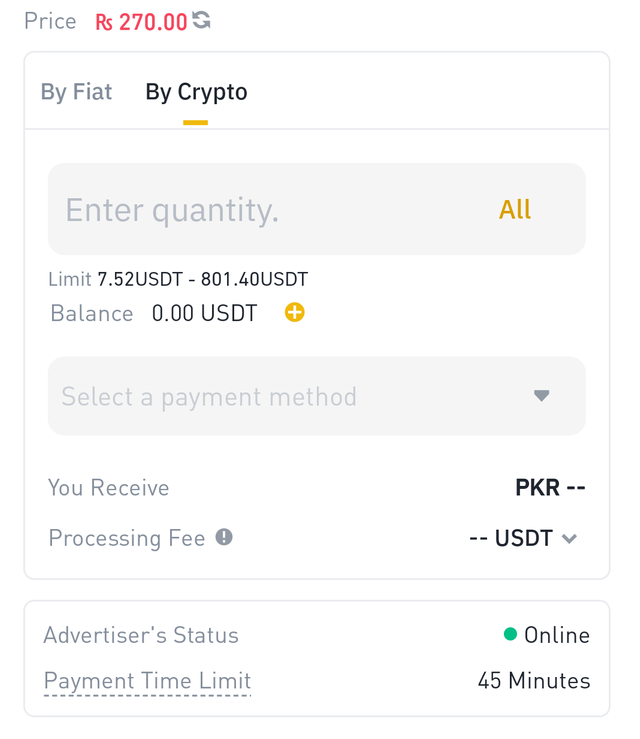 |
|---|
5. Terms to Agree:
- Now accept the terms of the trade, follow all the instructions of the seller. He will indicate the exact amount he wants to be paid and other details.
6. Pay for the Order:
Now log in to PayPal and pay the seller as per his instructions. Make sure that you add any reference or details of payment so he can verify that you have indeed paid.
7. Confirm Payment:
Paid the amount, then prove it to the seller via the messaging system of the P2P platform. It very well might call for proof in the form of a screenshot depicting confirmation of payment.
8. Wait for the Escrow to be Released:
- The P2P platform will hold the USDT in escrow until it has confirmation from the seller that the money has been received. This step helps ensure both parties deliver on their obligations.
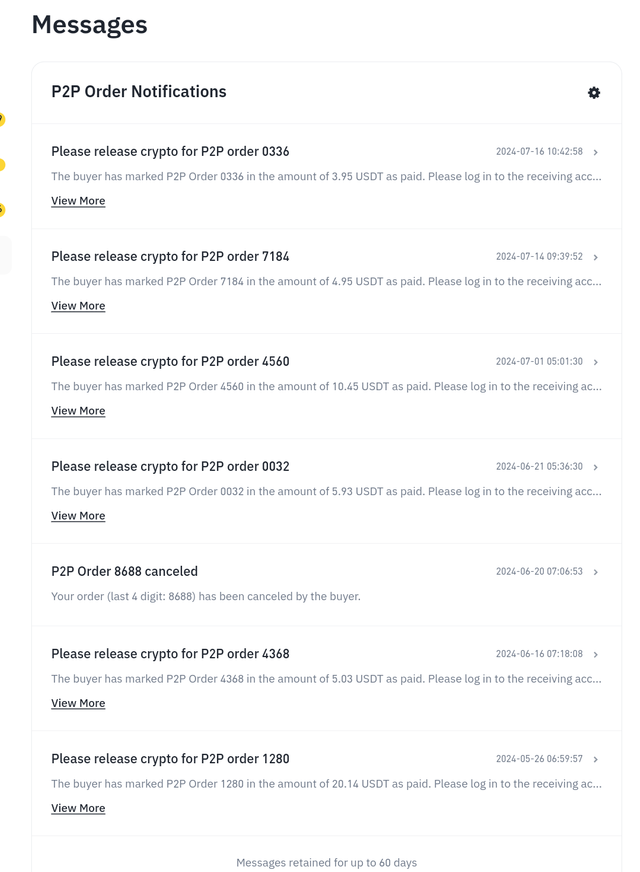 | 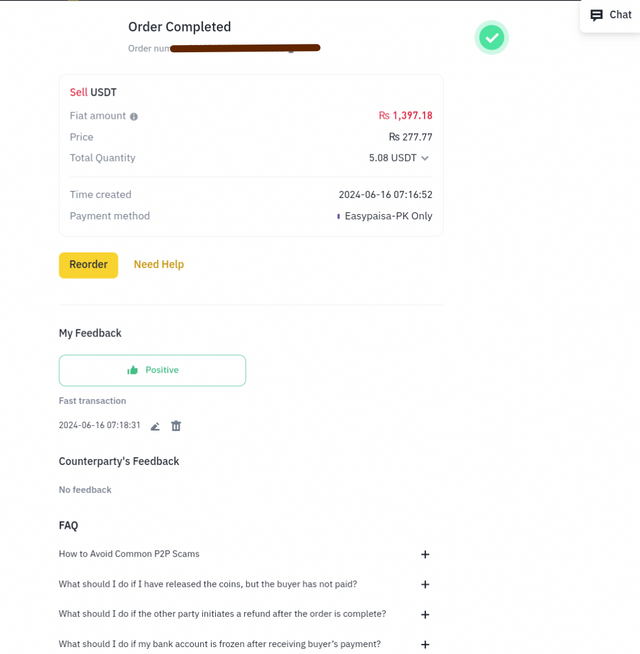 |
|---|
9. Receive USDT:
- The USDT will be released from escrow and will be credited to your account on the P2P exchange upon confirmation by the seller of the receipt of their money.
10. Complete the Transaction:
Just check if the USDT has been credited to your account. If all is well, then voilà; that's it. If anything goes wrong, you can always turn for help to the support team of the P2P platform.
Using these steps, you will successfully complete a P2P transaction for the buying of USDT using PayPal or any such similar app for payments.
Observations about the benefits and challenges encountered |
|---|
Some Observations about the Benefits and Challenges Faced
Benefits:
Convenience: The P2P platform and a payment app on PayPal made the process fast. Its user-friendly interface and features on instant payment made the purchase of USDT easier.
Security: The P2P platform's escrow protection guaranteed the money was well-held until the seller agreed on his part that he had got the money. This created faith in the system of transactions.
Flexibility: Different options to make the payment, including PayPal, enabled me to pick the most convenient method for me. This flexibility happens to be one of the foremost pros of P2P platforms.
Peer-to-Peer Transactions: Dealing directly with another user, sans interference from a central authority, provided the chance for more personal, potentially better deals.
Problems:
Verification Process: First setup of an account and verification of identity took some time. Although necessary for security, it is an additional step to get to trade.
Payment Delays: Though PayPal is basically fast, there were minor delays caused by confirmation processes. Making sure both parties are prompt in their confirmations for payments helps a great deal.
Fees: Depending on the means of payment and platform, there are various fees applicable to transactions. Depending on the country or whether performed in another currency, the fees even of PayPal can sum up.
Trust Issues: Even with the protection of escrow, when one is dealing with an unknown counterparty, there is still a level of uncertainty involved. The seller must be highly rated and have positive reviews.
Technical Knowledge: A certain degree of technical knowledge is required to learn the operations of the P2P platform and how to manage the USDT transactions, hence posing difficulty for some new users.
This means that in using the P2P platform for transactions in USDT, one gets a feel of convenience, security, and flexibility. In contrast, however, it involves verification delays, fees, and requires technical knowledge to complete the process, thus further complicating it. All of these factors need to be balanced out for smooth transactions.
Conclusion |
|---|
In conclusion , convenience, security, and flexibility are what make a P2P platform the best for USDT transactions. All these have appealing process flows, a number of alternatives to make payments, and direct transactions that are a reason people go for them. On the other hand, the complications come with time-consuming verification processes, probable delays in payment, fees, and technical knowledge required in the process. Balancing these would ensure that the transactions go smooth and effective. All in all, mastering the intricacies of P2P trading will become a tool for users to better navigate the market and realize its benefits.
kind Regards
@artist1111

Adieu, folks!
May the winds of fortune
carry you to greatness!
May the winds of fortune
carry you to greatness!
Upvoted. Thank You for sending some of your rewards to @null. It will make Steem stronger.
Greetings dear brother thanks for showing your love with p2p. I really appreciate your hard working. You explain in a good way and explain in deep. With the use of your article we learn easily all the points. As a binance user I always use binance on mobile phone. O feel comfortable on mobile. I wish you more success. Keep growing up with steem.
Your post is a really good informational article about P2P cryptocurrency markets. The points you made regarding the thorough analysis of the fees, security, and speed were very useful. I particularly liked how you described the TRC 20 USDT and other USDT token are. Will look forward to reading more from you.
This is a fantastic and detailed explanation of the P2P market for USDT on platforms like Binance and Huobi. I really appreciate the emphasis on the escrow protection which ensures both parties fulfill their obligations making the transactions secure and trustworthy.
it make me want to join
Hi @artist1111 P2P networking requires the appreciation of its structure because it is more decentralized as compared to a client-server structure that allows direct node-to-node communications. This paradigm is central to many operations ranging from file transferring to blockchain systems. The skills in P2P help to maximize the effectiveness of the network, guarantee the availability of connections in case of nodes’ failure and secure data sharing process. That is why, especially in the context of an ever-changing environment and the growing importance of networking in the modern digital world, it is imperative to continue the learning in the chosen area. This is a fantastic and detailed explanation about P2P.